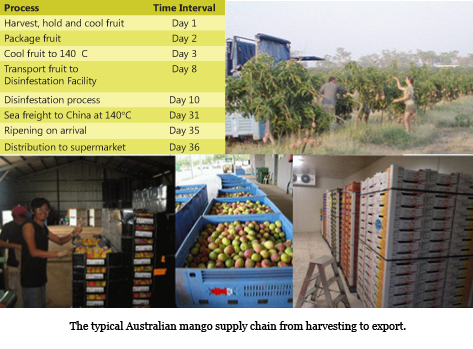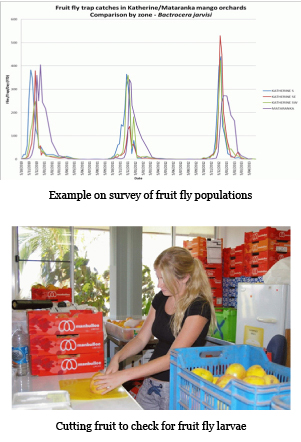The main challenges in developing tropical fruit for the export market are to ensure availability throughout most of the year for seasonal fruits, and to produce quality products that are in compliance to market access protocols of the importing countries.

As the consumer demand for horticultural products increases and there is an expectation that some seasonal commodities are available all year round in local supermarkets.
Growers and supply chains have to change their practices to meet these expectations. To achieve this, the producer either has to manipulate the plant genetics or use chemical that can alter the plant phenology so that the fruits are available throughout the year.
 Products now do not just have to be sold in the local market, they have to be packaged, refrigerated, transported far away, ripened and then presented to customers in a quality they prefer. Fruits and fruit products are sourced from different production regions around the world and made available to countries that want them.
Products now do not just have to be sold in the local market, they have to be packaged, refrigerated, transported far away, ripened and then presented to customers in a quality they prefer. Fruits and fruit products are sourced from different production regions around the world and made available to countries that want them.
The challenge with export is providing the consumer with an attractive product, the logistics of moving the product considerable distances, meeting the market access trade protocols of the importing country, and making profit for the producers.
Besides this, there have to be research efforts to facilitate the production of better quality and pest free products. One particular tropical fruit which has been given priority is the mango. Australia has an impressive mango export chain which ensures that only quality fruits are marketed.
The fruits are harvested at the mature, firm green stage, and are sorted and graded. Flesh colour is based on the industry standard and there should be NO defects. Only those graded as Class 1 are labelled export grade.
Mangoes need to undergo specific treatment procedures before being exported. The Vapour Heat Treatment (VHT) at inner fruit pulp temperatures of 46°C for 15 minutes, for fruit flies is mandatory for all mangoes being exported to China, Korea and Japan, while irradiation at doses of 150gy for fruit flies and 300 gy for mango fruit borers are required for exports to New Zealand.
Much research has been conducted in Australia to comply with export requirements especially to mitigate fruit fly infestation.
The basic question that arose was all commercially harvested mangoes are harvested mature and hard green. The researchable questions that follow were, are mature hard green mangoes a host to fruit fly, at what stage of fruit maturity are they host and what is the correlation between fruit fly pressure and fruit maturity.
The research that followed involved an assessment on two pest species, four mango varieties, four production areas, fruit fly trapping program to determine the population dynamics, fruit collection at harvest and absence of field treatments to manage fly populations.
Besides fruit fly surveys, fruits were cut to assess presence/absence of fruit fly larvae. More than 100,000 fruits were assessed over four years.
It was a common observation that when mangoes are harvested at the mature hard green stage, without any skin damage (cuts, cracks, scratches), the two Fruit Fly species within Northern Territory, appear not to favour the fruit at this stage or the eggs are not able to develop.
Fruits were then categorized according to fruit maturity range in caged trials. Fruit that were not attacked by fruit fly were assessed for resin or sap pressure in fruit skin and efficacy of sap to kill fruit fly eggs.
The study suggests that two of the processes – transport fruit to disinfestation facility and disinfestation process can be eliminated if fruits were not attacked at harvest stage. This will further facilitate export and quality of fruit.
More research is recommended in this aspect in order to convince importing countries that although fruits are exported from fruit fly prone countries the fruits at mature green firm stage will not be infested and therefore unnecessary to undergo disinfestation treatments.
____________________________
This article is based on a presentation by Bob Williams, Director of Plant Industries, Darwin, Australia, during the Symposium on Developing Research to Enhance Market Demand and Profitability of Tropical Fruits organized by TFNet on 14 August 2014 in Putrajaya, Malaysia.
